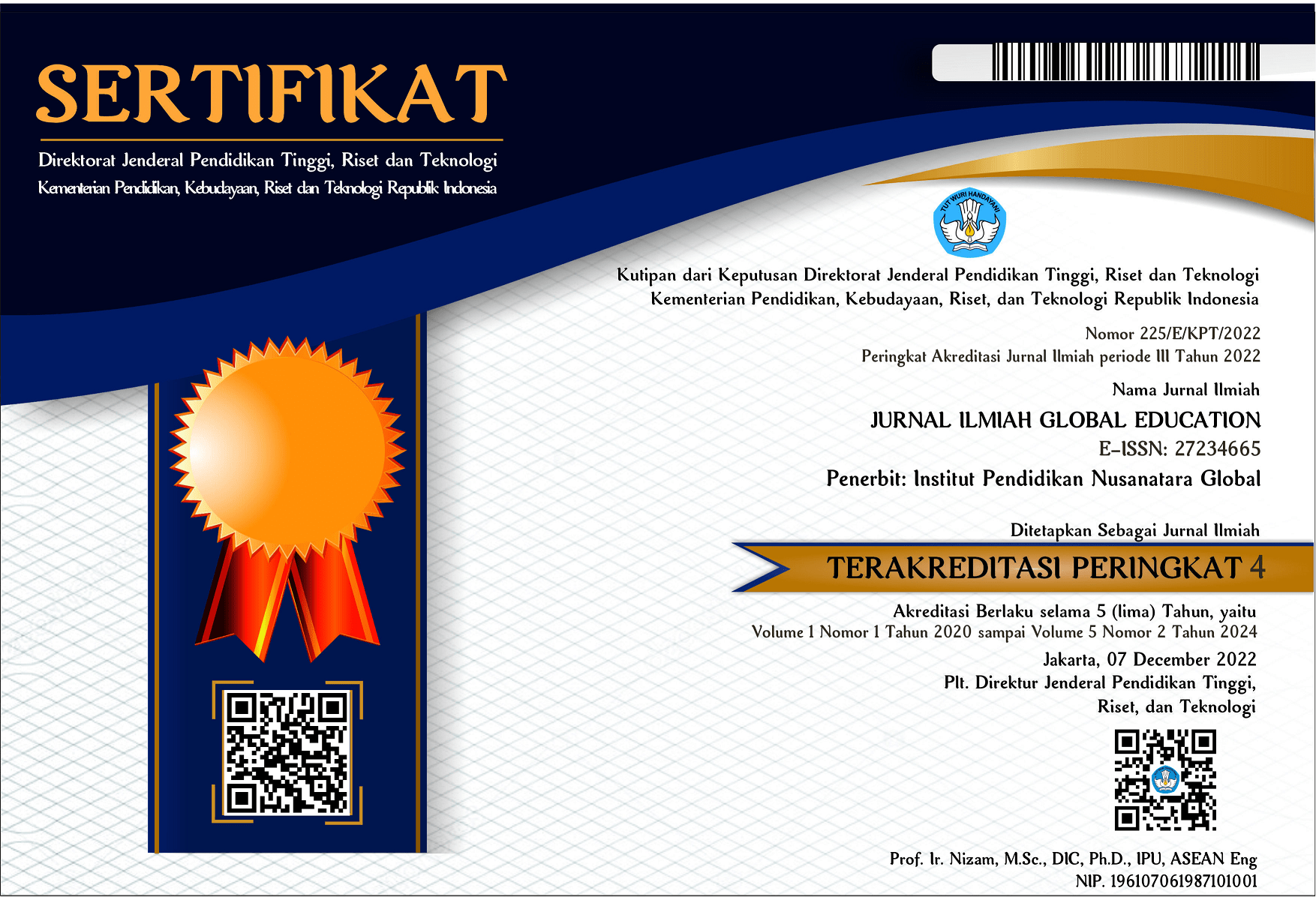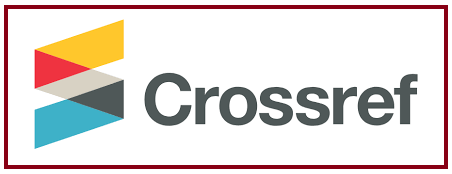AVAILABILITY OF GREEN OPEN SPACE IN MEDAN CITY
DOI:
https://doi.org/10.55681/jige.v4i4.1836Keywords:
Green Open Space (RTH), Environmental Sustainability,, Implementation of RTH PolicyAbstract
Urban development often prioritizes the economic sector over green open spaces (RTH), which significantly impacts environmental sustainability. Medan City faces challenges in meeting RTH targets, particularly in the context of rapid population growth and limited urban land. This research explores the availability and policies of RTH in Medan City and identifies factors influencing the lack of RTH. The research findings indicate that the implementation of RTH policies in Medan City is still far from the set targets. Despite efforts such as land acquisition and the addition of RTH, deficiencies persist, mainly concerning the community's understanding of the importance of RTH. Therefore, this study recommends an approach of intensification and extensification in RTH development, involving community participation, integrated planning, and the application of Green City concepts to achieve environmental sustainability and community well-being in Medan City.
Downloads
References
Absori, A. N. (2020). Green and health constitution of green open space and its implementation in Surakarta. Journal of Global Pharma Technology, 12(9), 70-74.
Amen, S. F. (2018). Analysis of the use of green open space in dense settlements in Rappocini District, Makassar City. Journal of Architectural Sciences, 1(1), 43-47.
Arikunto. (2019). Research Procedures. JAKARTA: Rineka Cipta.
Bental, W. P., Siahaan, R., &; Maabuat, P. V. (2017). Riparian Vegetation Diversity of Polimaan River, South Minahasa-North Sulawesi. Journal of Bios LoRTH, 7(1).
Dollah, A. S., Rasmawarni, &; M., A. T. (2010). Analysis of Green Open Space (Rth) from the aspect of implementing social functions in Makassar City. Journal of Architectural Sciences, 1(1), 62-71.
Handy, M. R. (2021). Adaptation of Riverbanks Community to Urban Green Open Space Development. The Innovation of Social Studies Journal, 2(2), 127-134.Mahendra, I. M. (2022). Analisis Ruang Terbuka Hijau Dalam Perspektif Pembangunan Kota Berkelanjutan (Studi kasus Kawasan pusat Kota Denpasar, Bali). VASTUWIDYA, 5(1), 41-49.
Mulyanie, E., &; Husna, R. A. (2019). Community-based management of public green open space (RTH) in Cihideung sub-district, Tasikmalaya city. METAEDUCATION, 1(2), 70-86.
Oktarini, M. F. Principles of Settlement in Wetlands with an Ecosystem Approach and Settler Preferences in Riparian Musi, Palembang.
Prabowoningsiha, N. H., Putri, R. A., &; Rini, E. F. (2018). Factors that affect the availability of green open space in every land use dominance. REGION, 2, 133-151.
Prakoso, P. &. (2019). Analysis of the implementation of 30% green open space in DKI Jakarta. Globe Scientific Magazine, 21(1), 17-26.
Pratama, I. A., Izharsyah, J. R., &; Putri, H. M. (2022). Analysis of Green Open Space (RTH) Development Planning in Medan City. Journal of Public Administration and Policy (JAPK), 2(1), 1-12.
Purnamaselfi, M. W. (2022). Literature Study: Analysis of Green Open Space Provision in Urban Areas. Journal of Spatial Studies, 1(1), 29-48.
Retired, M. F. (2022). Identification and development of Green Open Space (Rth) in Bojongloa Kidul District, Bandung City (Doctoral dissertation, Faculty of Engineering Unpas).
Rijal, S. (2008). The need for green open space in Makassar City in 2017. Journal of Forests and Societies, 3(1), 8219.
Sugiyono. (2017). Educational research methods (quantitative, qualitative and R&D approaches). Bandung: CV. Alphabeta.
Law Number 26 of 2007 concerning Spatial Planning. (n.d.).
Cho, S. H., Poudyal, N. C., & Roberts, R. K. (2008). Spatial analysis of the amenity value of green open space. Ecological economics, 66(2-3), 403-416.
Xue, F., Gou, Z., & Lau, S. S. Y. (2017). Green open space in high-dense Asian cities: Site configurations, microclimates and users’ perceptions. Sustainable cities and society, 34, 114-125.
Khotdee, M., Singhirunnusorn, W., & Sahachaisaeree, N. (2012). Effects of green open space on social health and behaviour of urban residents: A case study of communities in Bangkok. Procedia-Social and Behavioral Sciences, 36, 449-455.
Xue, F., Gou, Z., & Lau, S. (2017). The green open space development model and associated use behaviors in dense urban settings: Lessons from Hong Kong and Singapore. Urban Design International, 22, 287-302.
Schuch, G., Serrao-Neumann, S., Morgan, E., & Choy, D. L. (2017). Water in the city: Green open spaces, land use planning and flood management–An Australian case study. Land use policy, 63, 539-550.
Wang, H., Dai, X., Wu, J., Wu, X., & Nie, X. (2019). Influence of urban green open space on residents’ physical activity in China. BMC public health, 19(1), 1-12.
Nastiti, F. N., & Giyarsih, S. R. (2019). Green Open Space in Urban Areas: A Case in the Government Office of Boyolali, Indonesia. Regional Science Inquiry, 11(1), 19-28.
Handy, M. R. N., Mutiani, M., Putra, M. A. H., Syaharuddin, S., & Putro, H. P. N. (2021). Adaptation of Riverbanks Community to Urban Green Open Space Development. The Innovation of Social Studies Journal, 2(2), 127-134.
Ajrina, H., & Kustiwan, I. (2019, December). From green open space to green infrastructure: The potential of green open space optimization towards sustainable cities in Bekasi City & Regency, Indonesia. In IOP conference series: earth and environmental science (Vol. 399, No. 1, p. 012130). IOP Publishing.
Trisno, R., & Lianto, F. (2019, July). Realization of Hybrid Concept and Symbiosis in Green Open Space (RTH) at Housing Complex RW (Neighborhood Councils) Pluit, Jakarta Utara, Indonesia. In Journal of Physics: Conference Series (Vol. 1179, No. 1, p. 012165). IOP Publishing.
Mbarep, D. P. P., & Herdiansyah, H. (2019, November). Ecological function of green open space as water infiltration: Study in kalijodo green open space, north jakarta. In Journal of Physics: Conference Series (Vol. 1381, No. 1, p. 012049). IOP Publishing.
Yuniastuti, E., & Hasibuan, H. S. (2019, October). Green Open Space, Towards A Child-Friendly City (A Case Study in Lembah Gurame Park, Depok City, Jakarta Greater Area, Indonesia). In IOP Conference Series: Earth and Environmental Science (Vol. 328, No. 1, p. 012016). IOP Publishing.
Downloads
Published
How to Cite
Issue
Section
License
Copyright (c) 2023 JURNAL ILMIAH GLOBAL EDUCATION

This work is licensed under a Creative Commons Attribution-ShareAlike 4.0 International License.













